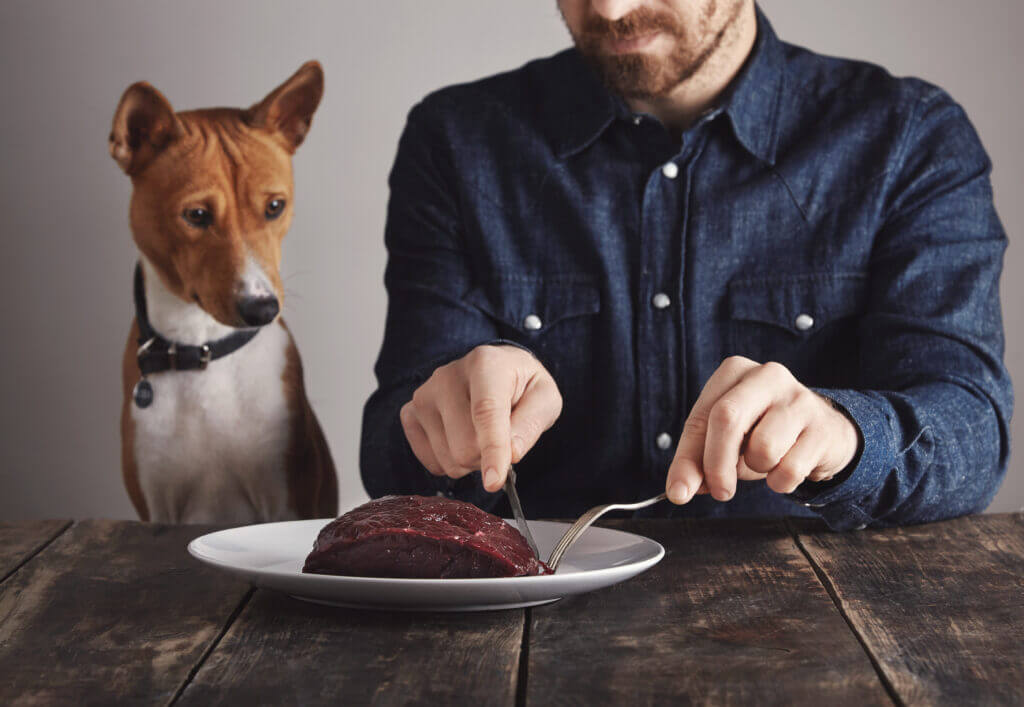From Meat to Water: How Dogs Percieve Taste?
As dog owners, we naturally wonder if our dogs enjoy certain foods as much as we do. Dogs’ taste buds can detect the same tastes as ours, but surprisingly, they have far fewer taste buds than humans. In this blog, we’ll dive into how canine taste buds work and how dogs perceive flavors.
Taste Recognition
While we might think dogs have a more intense sense of taste, they only have around 1,700 taste buds compared to our 9,000, meaning their taste perception is about six times weaker than ours. Their taste buds are located on the tongue, palate, and throat. Although placed similarly to humans, dogs experience flavors differently.
In some areas, dogs have more refined taste abilities. Taste buds in different parts of their mouth react to microscopic molecules. Like us, dogs can detect sweet, sour, salty, bitter, and umami flavors (found in protein-rich foods like meat and cheese).
Unlike humans, dogs also have taste buds dedicated to water, making water far from “tasteless” for them. These water receptors are located on the tip of their tongue, which they use while drinking. After eating salty or sweet foods, their sensitivity to water increases, encouraging hydration.
Dogs naturally enjoy meat, a trait inherited from their carnivorous ancestors, the wolves. This explains their preference for umami flavors linked to protein-rich foods. On the other hand, dogs are less capable of tasting salt, likely because their ancestors’ diets contained sufficient salt from meat.
Being omnivores, dogs also enjoy sweet flavors from fruits and vegetables and have more receptors for sweetness than humans. This ability helps them distinguish ripe fruits and plants, part of their ancestors’ diets.
Picky Eaters
If dogs can taste, why do they sometimes eat things we find repulsive? The answer lies in their sense of smell. Though their taste ability is limited compared to humans, their sense of smell is far superior (dogs have about 125 million smell receptors compared to our 5 to 10 million). Smell and taste are closely linked, and dogs can “taste” food through their nose and a special organ along their palate.
Dogs generally aren’t picky eaters, but if your dog is selective, remember that dogs often eat based on smell. Choosing aromatic food can increase success. However, the issue might not be with the food’s taste or smell but with a clever dog waiting for a more tempting meal if they skip the first dish.
Food Texture
In addition to taste, dogs are sensitive to the texture of food. Offering a variety of textures, like kibble, wet food, and chew treats, can improve their dining experience and meet their nutritional needs.
Enhancing the Eating Experience
Some dogs struggle to finish their food. Introducing activities that make eating more engaging can stimulate their senses and increase their appetite. Puzzle toys, snuffle mats, treat balls, and slow-feeding bowls are great ways to engage their taste buds, sharpness, and problem-solving abilities, preventing fast eating and promoting better digestion.
Different animal species have varying taste preferences. While dogs are mostly meat lovers, they are omnivores, meaning they eat both meat and plant-based foods. They also tend to eat almost anything—from meat and vegetables to tissues, animal droppings, toy parts, and sometimes even furniture!







